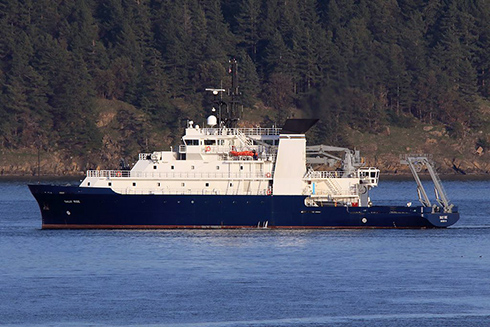News
News Articles
Viewing items with Category: All Categories, Year: All Years

2020: a record-breaking year for the USF glider team
The gliders, which roamed the ocean 208 days last year, help improve our understanding of red tides, hurricanes, ocean currents, and fish
June 22, 2021Blogs and Perspectives

Investigating Whales, Penguins and Seals on the Bottom of the World
It’s tough to study interactions between predators and their prey no matter where you are in the world’s oceans, but it’s especially challenging in the ice-covered Ross Sea.
June 22, 2021Blogs and Perspectives

Projections of US high-tide flooding show rapid increases and extreme months
Continued sea-level rise will exacerbate the issue where present, and many more locations will begin to experience recurrent high-tide flooding in the coming decades.
June 21, 2021News

Unraveling the mysteries of trace elements in the oceans
Recently, CMS Associate Professor Dr. Tim Conway served as lead editor on a special issue of Chemical Geology called “Cycles of trace elements and isotopes in the ocean – GEOTRACES and beyond."
June 18, 2021News

The Byrne lab goes West: three CMS students set sail on 45-day Pacific Ocean cruise
The major goal is to understand trends in the Pacific Ocean, with a specific focus on environmental parameters that influence ocean acidification – a major threat to ocean health, food security, economies, and more.
June 15, 2021Blogs and Perspectives

Marine Life 2030 endorsed as part of UN Decade of Ocean Science
USF is a key academic partner in this global, 10-year program led by Smithsonian Institution to create a globally integrated information management and forecasting system for marine biodiversity
June 8, 2021News

CMS scientists on the bottom (and top) of the world!
A group of USF CMS faculty and researchers who comprise ‘The Southern Ocean Science’ (SOS) group, carries out wide-ranging interdisciplinary research in Earth’s polar regions, providing new insights into how processes occurring thousands of miles away affect us here in Florida.
May 27, 2021News

USF scientists announce initial findings from Piney Point research effort
USF College of Marine Science researchers today shared their initial findings of how the Tampa Bay ecosystem has responded to the controlled discharges of nutrient-rich wastewater released from the retired Piney Point fertilizer processing plant.
May 24, 2021News

Modeling was key in Deepwater Horizon oil spill research. So was consistent funding.
New state-of-the-art tools have changed the way we understand the impacts of oil on the marine environment.
May 14, 2021News

Measuring biodiversity from space
In a new publication in Nature Ecology & Evolution, a team led by Prof Dr. Andrew Skidmore from the University of Twente in the Netherlands share a new tool to add to the biodiversity toolkit: measuring biodiversity from space.
May 13, 2021News

USF Team Selected to Join New NSF Diversity Program
The goal of this two-year program hosted by Columbia University to advance justice, equity, diversity, and inclusion (JEDI) initiatives in STEM.

Providing the best tools for coastal management, protection, and resiliency
The Ocean Visions network, whose mission is to transform science and engineering into scalable, equitable, and sustainable ocean solutions, held its third virtual “Coastal Solutions” workshop April 27-28, 2021.
May 3, 2021Blogs and Perspectives